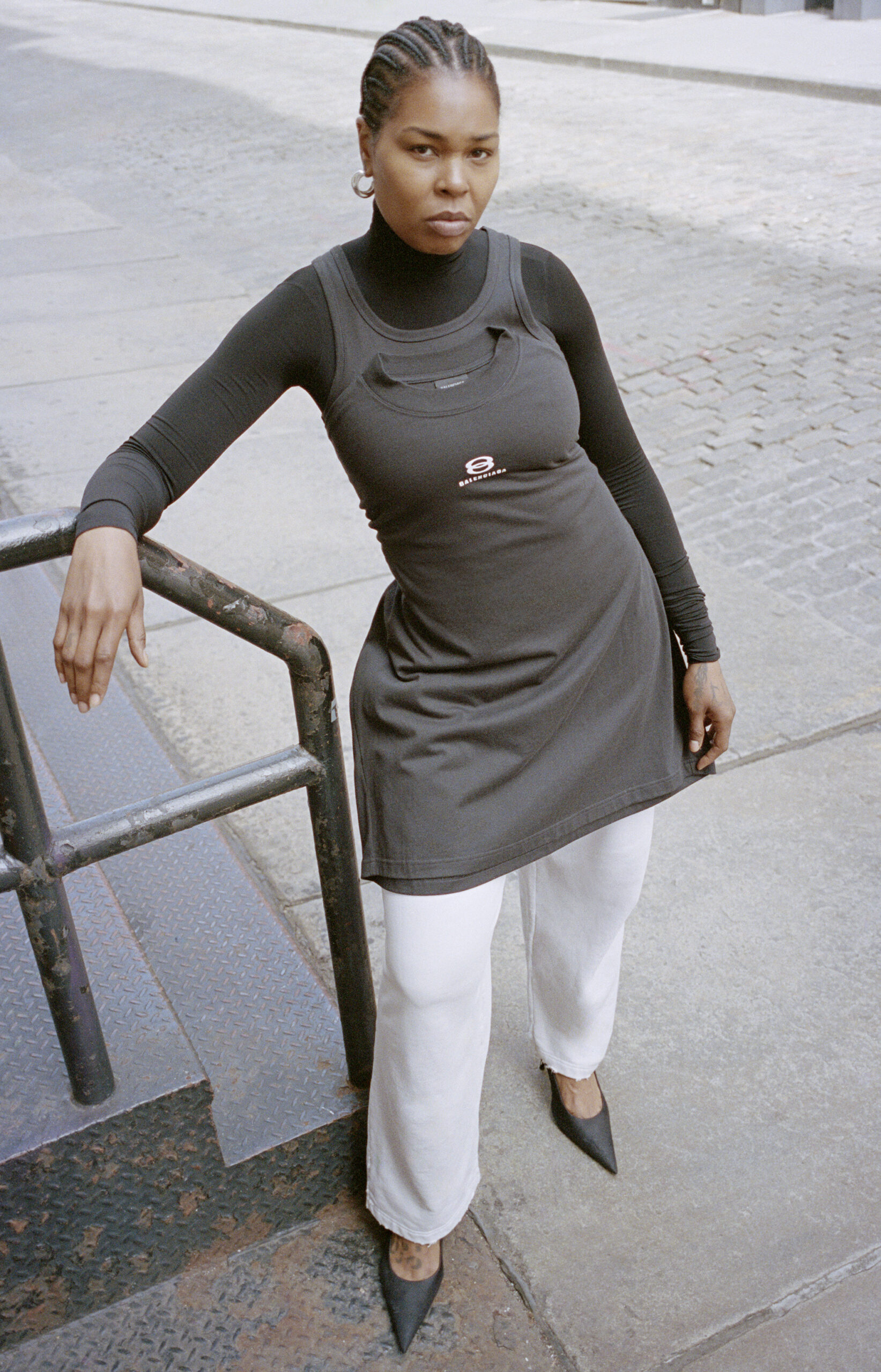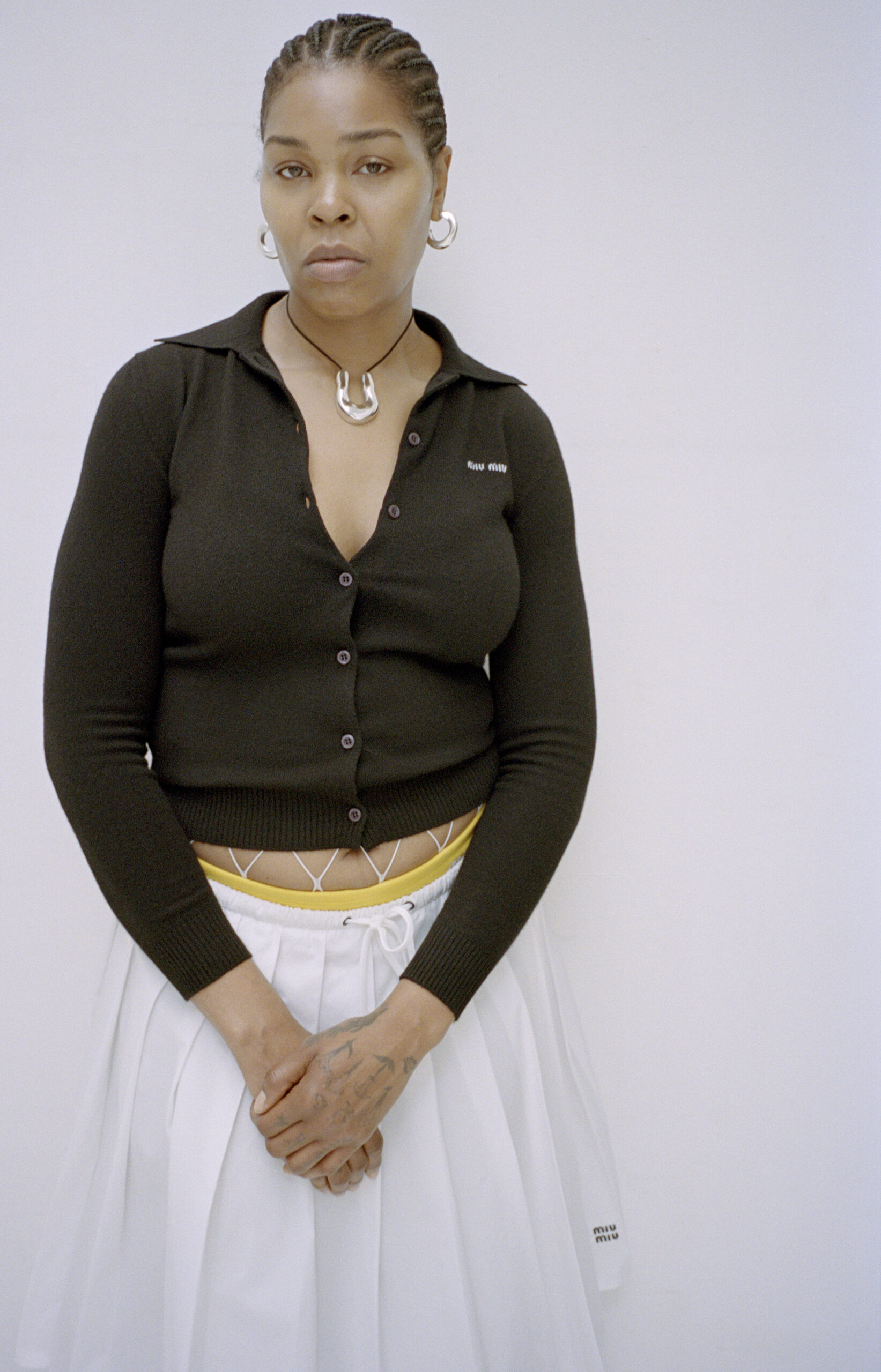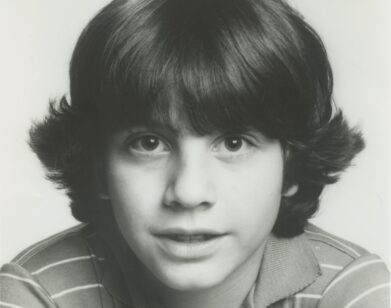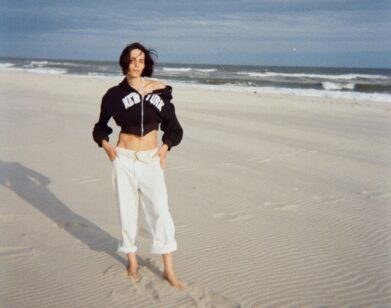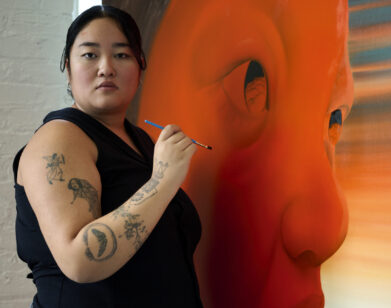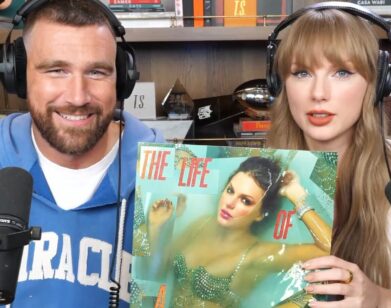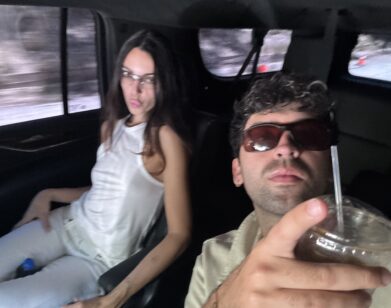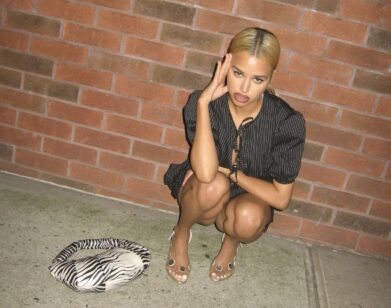ARTIST
Diamond Stingily and Arthur Jafa on Ego, Grief, and Dopamine
Orgasms Happened Here. That’s the title of Diamond Stingily’s solo summer show at New York’s 52 Walker gallery. The title stems from an uncanny childhood incident embedded in the 34-year-old artist’s memory. When her family moved to a subdivision in Romeoville, Illinois, a teenage Stingily and her brother were investigating the house. In one of the rooms, they came upon a sticky note that read, “Orgasms happened here.” Even then, struck with the perverse residue of the previous tenant, Stingily knew she’d stumbled upon a great title. So much of the artist’s work stems from the power of language and the potency of childhood memories. Stingily moves fluidly between writing, visual art, and performance. But as fellow artist Arthur Jafa makes clear, creatives don’t always like to be summarized in a few pat sentences.
———
SUNDAY 10 AM APRIL 28, 2024 NYC
ARTHUR JAFA: Hey, Diamond. Where are you?
DIAMOND STINGILY: I’m in my home in Bed-Stuy.
JAFA: I know, like me, you travel a lot. I think I’ve only seen you in Europe.
STINGILY: We saw each other in New York a few weeks ago.
JAFA: Did we? My god, my brain. I’ve been running on fumes. I don’t remember anything from my opening. It’s a blur.
STINGILY: That’s what happens to me too. I won’t be remembering my opening.
JAFA: Yeah. I was going on two weeks of three hours a night of sleep. I was sleeping in the gallery. Anyway, it’s good to see you. Something I wanted to ask you about is the Europe thing. Do you feel any difference between the kinds of things you show in the States versus Europe, particularly as a Black artist?
STINGILY: Honestly, A.J., I don’t think about what I’m going to show in Europe versus at an American institution or a gallery. But the audience is different, so it definitely gets talked about differently.
JAFA: A lot of times I go see shows and feel like I don’t know what the artist feels. It’s very masked. One of the things I’ve liked about your work is the way it confronts villains. Do you have a particular philosophy or aesthetic ethos about that?
STINGILY: I only express what I know. I’m a sensitive person. Seriously, very sensitive. So, if people can feel something coming off of my work, that’s great, but that’s not necessarily a conscious thing when I make art. I’m not, like, “I want people to feel this.” But I think I’m a very honest person. It’s hard for me to not be myself, and that’s a line of vulnerability. I think people pick that up, so that’s great.
JAFA: I know a lot of people are curious about this dual identity you have as artist and writer, as if there’s a split between the two.
STINGILY: But you have that, too.
JAFA: Well, not as a writer, because I’m definitely not a writer.
STINGILY: But as an artist you have so many different practices. You’re also a cinematographer. And on top of that you’re a father. It’s not about split personalities, but don’t you find different personas of yourself or how you carry yourself in different rooms?
JAFA: In an art context, people really want to box you. They’ve got to be able to frame you in a certain way. And if you have any sort of impulse towards the multidisciplinary, they get tripped up. I’m very sensitive to the idea that I’m a video artist. I love video. But whenever a person says something definitive about how they understand me, it tends to generate a countermove in me. I just don’t want to be boxed in.
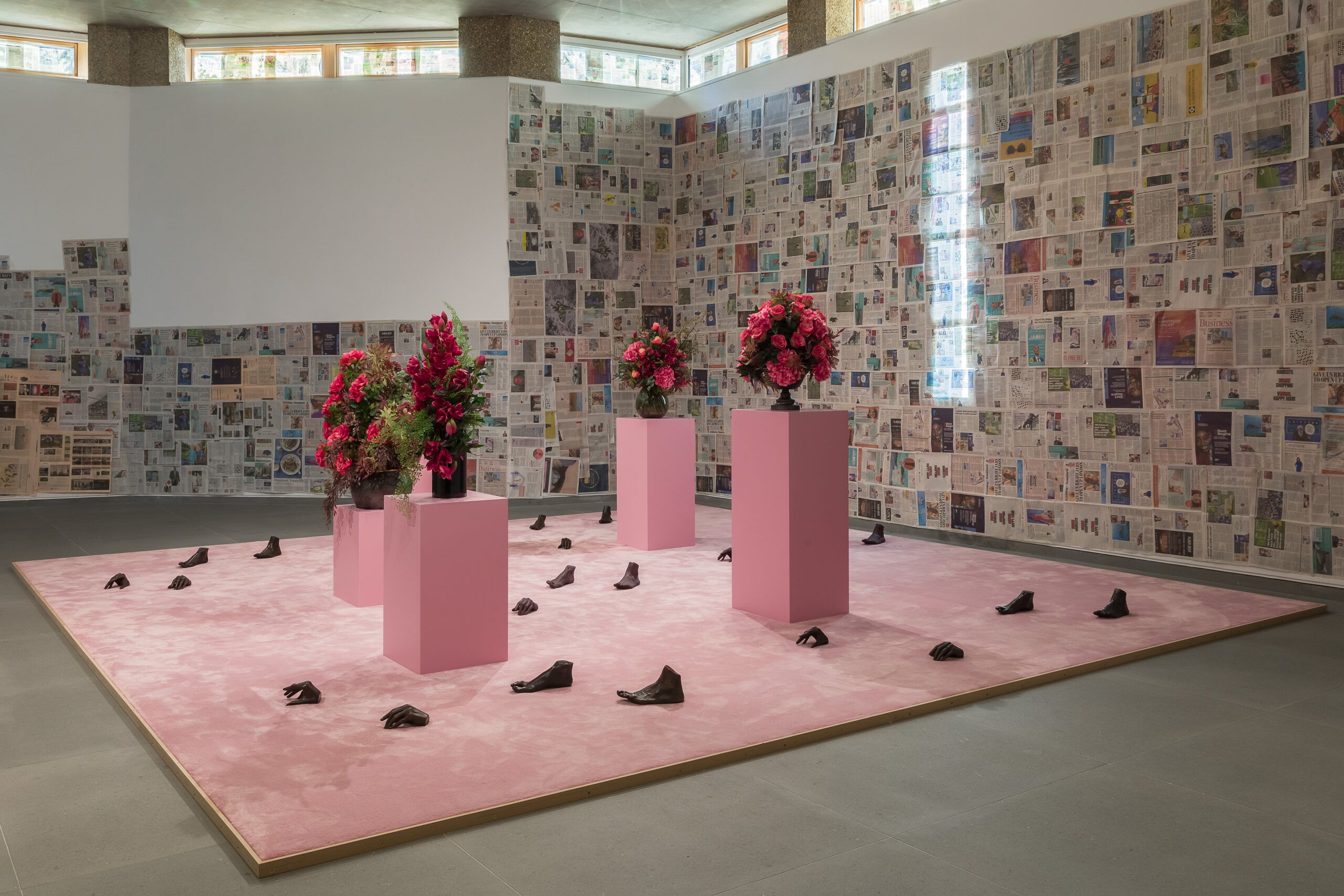
Installation view, “dead Daughter,” 2021. Cabinet, London. © Diamond Stingily. Courtesy of the artist, Cabinet, and Greene Naftali, New York.
STINGILY: Sometimes I get irritated when someone tries to talk for me, but at the same time, I know someone is reading this and they’re just trying to get a sense of who you are. If I’m interested in something, I’ll go out of my way to figure it out. So, I try not to get too caught up in what an article or a paragraph about me says, because there’s more to me than that.
JAFA: You just used the word “irritating.” I get irritated about a lot in the art world. But one of the things I get wound up about is the way people will come up and speak to you with a certain kind of familiarity, you know what I mean? I know some is just my warped internal personality, because obviously it’s great, particularly when younger Black people are excited to meet you. But you can be having a conversation with somebody and they’ll just break in, start calling me Arthur, things like that. As soon as somebody’s like, “Yo, Arthur,” with this level of familiarity, I know they really don’t know me, because nobody calls me that name. A handful of people call me Arthur. I wonder how much of this is generational, because I do find younger Black artists are just so much freer.
STINGILY: It could be generational, but I also think I come from a matriarch that has really drilled in me that I truly have to believe in myself in order to survive. I can’t worry about what other people think. I’m really out here. So it’s like, you’ve got to be strong, you’ve got to stand tall. I am tall, I am Black, okay? I’m like, “Alright, you see me then. Respect it.”
JAFA: I feel like I have freedom, but compared to this younger generation, it feels much more combative or insurgent. I feel like I’m making gestures that are against, as opposed to just being. But you seem like a Vulcan or something. Just above it, completely floating, which I guess I’m envious of.
STINGILY: I guess if you’re envious you’ve got to understand you’re part of the generation that allowed people to feel freedom. I also didn’t necessarily come from an institutional background. I didn’t go to art school, so maybe that could be a lot of my attitude as well.
JAFA: I didn’t go to art school either. Sometimes in the art world I’m thinking, “I don’t know what the hell you’re talking about.”
STINGILY: Yeah, the jargon that they talk. I had to teach myself art history and things like that. When I lived in Chicago, because I was intimidated to talk about art, I felt like I didn’t know what I was talking about, even though I probably did because I’m smart. But I volunteered at the Art Institute. It was me and elderly women. That was my group, so maybe I just approach it differently because I don’t think about the same things that my peers do. It’s not a right or wrong way, it’s just my way, and I’m constantly evolving. I’m also aware that as an artist, I have a lot more agency than a lot of people I know. I make my own schedule, and people are interested in my art and my thoughts. Sometimes I think the point of being an artist is to be able to do those types of things that we’re talking about.
JAFA: There’s a certain degree in which, as artists, particularly as Black artists, it’s like you’re modeling what freedom looks like. I don’t mean modeling in the sense of, like, “Oh, you should imitate me.” I mean it more in the sense of, this is what running wild looks like, this is what being free looks like. And with that running wild part, my younger friends are much less self-conscious about it than I am.
STINGILY: I recently met Brontez Purnell—he’s older than me—and I was telling him, “I saw you doing your thing, and I was 11 years old listening to Gravy Train!!!! and I saw you. You got me curious about you. I kept up with your career.” I was talking to him, like, “I just wanna give you your roses right now.” I feel like he’s a part of an older generation that helped someone like me be who I am. Him, and other artists and writers like him. Whether you’re a fan or not, you can see the blueprint of what they did.
JAFA: I was reading an interview you gave where you were talking about your mom passing, and that’s something I’ve been struggling with. My best friend passed a couple of years ago. You used this word, “ascension.” I was struck by that word, and how you take the experience of losing somebody and make something out of that.
STINGILY: Honestly, I felt like I had to do it. That was my way of expressing grief. I can’t afford to build my mother a Taj Mahal, but I can do other things to express that I love and miss her. The same with my grandmother. I lost her two months after my mother, so I was dealing with a lot of the feelings that come with losing two pillars in your life. The word “ascension” for me was just something bigger than myself, above and beyond me.
JAFA: You seem appropriately named. Diamond.
STINGILY: Thank you. I love my name. When I was a kid, not so much. I wanted to be “Jasmine” really bad, but we got over that. I could tell my mother really thought about my name and put her heart in it.
JAFA: You started off as a writer, right?
STINGILY: No, I started off as a performance artist. I went to school for writing, but then I started doing a lot more performance art in Chicago. And I did Martine Syms’ [2015 video work] “Notes on Gesture.” That’s how I was introduced to New York in a lot of ways.
JAFA: Is being a performer in someone else’s work a different experience than when you are doing your own thing?
STINGILY: Martine’s the director, I’m the actress. I’m not in the room being, like, “It’s both of our things.” I’m aware of my position in the projects that I participate in, so there’s no butting heads or ego.
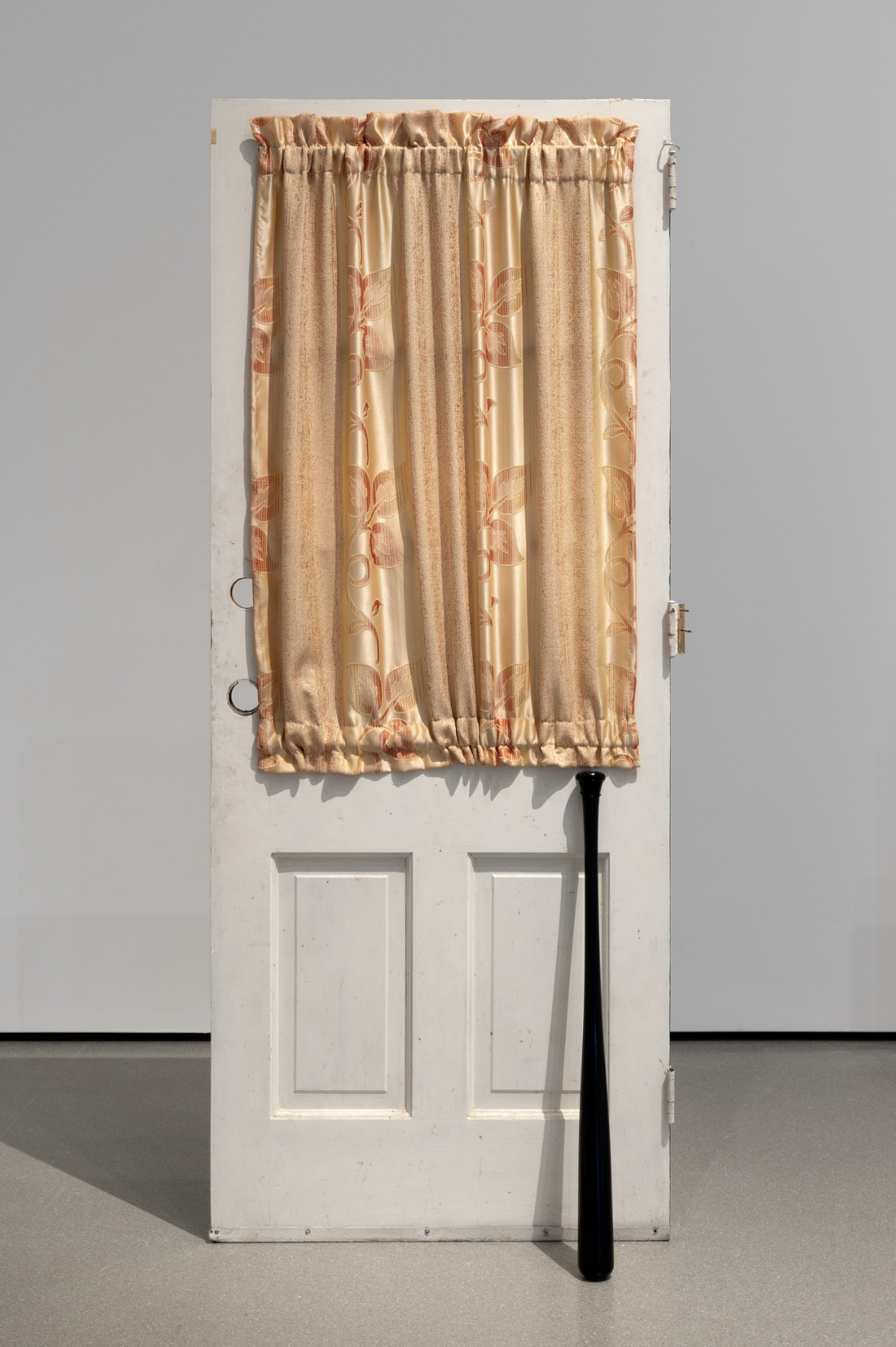
Installation view, “Holding Space” in Collection 1970s—Present, Museum of Modern Art, New York. © Diamond Stingily. Courtesy of the artist and Greene Naftali, New York. Photo by Robert Gerhardt.
JAFA: I was talking to somebody a few days ago about Madonna’s acting career.
STINGILY: What about it?
JAFA: Exactly. What about it? It’s nonexistent. They said because her persona, it was too big, she could never be in character. She always had to be Madonna, and that’s why it didn’t work.
STINGILY: She tore crazily in Girl 6. She was the madam.
JAFA: Maybe you’re right. But in a way, it was playing a variation of herself.
STINGILY: Yeah, but she tore in Evita.
JAFA: That’s definitely a variation of herself.
STINGILY: Okay, but she’s Madonna, why’s she got to be something else? Can we watch a movie and be like, “Wow, that’s Madonna,” and leave it alone?
JAFA: We can. But my friend was just saying that Madonna couldn’t subsume her own persona in the character. In other words, this is going to sound weird, but she couldn’t humble herself to the process.
STINGILY: But also, don’t you think that’s up to the viewer to allow the person to be that persona, too? We didn’t allow her to be the characters because we were so caught up in the fact that it was Madonna. You talked about, earlier, being pigeon-held, and maybe that’s what the audience did to her.
JAFA: I think I’m trying to say something that I get the sense you fundamentally don’t agree with, which is this whole idea that artists’ egos function in a certain kind of way.
STINGILY: At this point in the game, I’m not romantic about the idea of an artist, and every artist is so different as to how we move and survive. And yeah, I don’t agree. But that’s good. It would be boring if we agreed.
JAFA: Okay, what about the distinction I increasingly make, which is between making something and the presentation of showing them. Is that seamless to you?
STINGILY: To me, it’s one thing. I make work because I want to show it. I like set design a lot, actually. So, I think about that in a way where it’s, like, “How can I set this up?” I look forward to installing, actually. The install days are really fun for me.
JAFA: Really?
STINGILY: It makes me feel like I’m in a fashion show. I feel like a working bee.
JAFA: Me too. I just find that it’s a very different feeling than in my studio making a thing.
STINGILY: Oh, yeah, in the studio it’s a lot calmer. But I’m a pretty chill person, so the studio is very calm and quiet. But I get very anxious and emotional before an opening. It’s like a teenager that wants to go to prom but doesn’t want to take the picture. It’s very, “She’s in a mood.”
JAFA: Do you have a sense of when you made an internal transition from being a writer to being an artist, or being a performer to being an artist?
STINGILY: No, but at one point I just quit my part-time job. And then something came up. Terence [Nance] was making Random Acts of Flyness, I acted in it, and it was like, “You’ve got to be fully all the way in it and just let go of the rope and free fall right now.” Because I had a job. The paycheck wasn’t huge or nothing, but it was like, “Okay, I have this job and I do some shows every once in a while.” Or I’ll act in this thing, and then I’ll go back to making coffee or whatever. And then, at one point I was like, “Okay, you’ve just gotta fully do it now.” That’s just what happened naturally.
JAFA: What’s your relationship to social media? I’m addicted to Instagram. Literally, when I wake up—
STINGILY: Really?
JAFA: First thing in the morning, I look at my phone, Instagram. If I wake up in the middle of the night, I look at Instagram on my phone. But I have to say, I never post. I posted a lot in the very beginning—literally, the first two or three months. I looked for a job, and I never went back to posting. So I post maybe once every two or three years, but I am locked in on Instagram like nothing else.
STINGILY: Damn! I ain’t know that.
JAFA: Oh, yeah, for real. Even my metric of my work clicking or connecting or getting trashed is not the art world, it’s not the art magazines, it’s definitely what shit gets reposted from my shows on Instagram.
STINGILY: But ain’t that just you getting off on dopamine? Are you addicted to the dopamine?
JAFA: No. If I see my own thing, I get a little dopamine hit from it, but it’s not like I’m checking my likes. I don’t even know how.
STINGILY: No. A.J., do not explain. You do not have to explain your interactions on Instagram. Yeah, we’re good.
JAFA: So how do you operate on Instagram?
STINGILY: I just post what I post and then delete it. I post and delete a lot. And I think I’m funny. So then, I’ll post something, get my little hee-hee-ha-ha out. My friends see it, they get my humor, they giggle, and then I’m like, “Okay, it’s been up for four hours. Delete.” And I don’t take selfies.
JAFA: But I’m a real connoisseur of people’s Instagram feeds. Some are beautiful, some are funny. Some of my good friends and artists I love have these genius threads.
STINGILY: I don’t have a thread.
JAFA: Well, clearly you don’t if you delete shit after four hours. Okay, last question. What kinds of things are you envisioning in the future?
STINGILY: I don’t want to say it because I want it to happen. I’m superstitious like that, for real. I enjoy being superstitious. Gives me something to get excited about.
JAFA: You said you’re superstitious. I would say quantum.
STINGILY: Yeah, I like that word. Let’s end it with,“She’s quantum.”
———
Makeup: Kuma using MAC Cosmetics at Streeters.
Production Assistant: Kiernan Francis.

